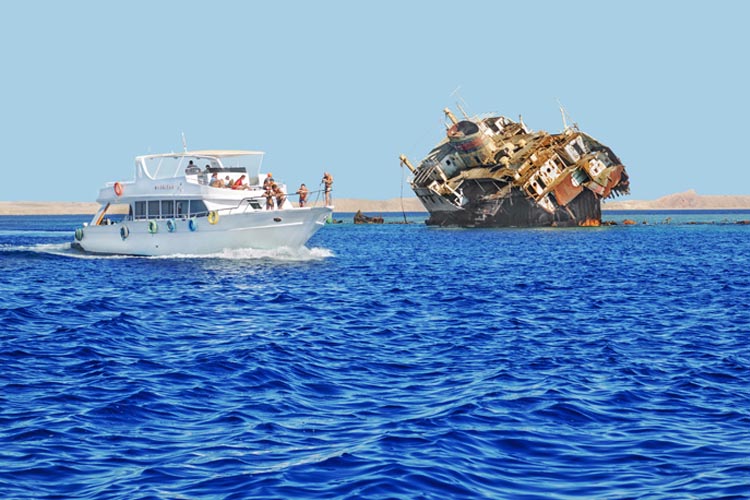
A proposed bridge between Egypt and Saudi Arabia would destroy the reefs of Sharm El Sheikh’s Tiran and Ras Mohammed national parks
Last week during a visit to Egypt the Saudi king officially announced plans to build a bridge joining the two countries which would go over Tiran Island and would destroy some of the best dive sites in the Red Sea.
King Salman made the announcement during talks with Egyptian president Abdul Fattah al-Sisi during talks in Cairo. The Egyptian president said the bridge will be named after the Saudi king.
The island of Tiran (which is technically owned by Saudi, they just sort of let Egypt borrow it) lies just a few miles from the Eastern shore of the Sinai peninsula, opposite the Nabq Bay area, with the famous reefs of Jackson, Woodhouse, Thomas and Gordon rising to the surface as part of an underwater ridge almost exactly half way between Sinai and Tiran.
Many divers consider these reefs to be the best that Sharm has to offer, and one of the reasons that they are so spectacular is precisely because of their geological location.
Related articles:
- Anger over Egypt’s move to return control of Tiran islands to Saudi Arabia
- Egypt votes to return Tiran and Sanafir to Saudi Arabia

The Gulf of Aqaba, which runs between the Sinai Peninsula to the west and the shores of Israel, Jordan and Saudi Arabia to the east, is a deep volcanic trench which continues south throughout the Red Sea proper. In places it reaches 1.8km of depth, but the ridge on which the Strait of Tiran is situated rises to less than 300m in the deepest parts, and the ‘Saddle’ between Jackson Reef and Tiran island to as little as 70m.
It’s what makes the currents so harsh at times, but it is those very currents, rising up from the deep, that bring nutrients to the surface to sustain the very rich marine ecosystem that has delighted divers since Jacques Cousteau visited in the 1950s. It’s one of the best areas to find sharks, and trips to Tiran are far more frequently interrupted by dolphin sightings than the voyage to Ras Mohamed.
There is a resident population of Risso’s dolphins that can be found around the Saddle almost every time you go looking for them, and the shallow sea grass around Tiran is a home to an already threatened population of dugongs.
Unfortunately, the same topography that brings us these marvels also makes it the only location where a bridge can be located. Saudi Arabia is not far away, easily visible across the gulf, and the water between Tiran and Saudi Arabia is very shallow.

It is feared that the bridge will be a high suspension bridge (the Strait is used for shipping) between Nabq and Tiran, with Jackson Reef providing one of the easiest locations for a supporting column, and then some sort of spanning bridge across the shallow water between Tiran and Saudi. The shortest distance from the Sinai to Tiran is approximately 6km; the longest bridge span in the world is just under 2km.
Besides the impact of building on the reef, the years of construction would have a devastating impact on the whole area right down to Ras Mohammed and beyond.
Israel and Jordan have already expressed (many times, over the years) their opposition to the project based on security concerns, as well as environmental and – in all probability – the financial and political problems that a direct connection between Saudi and Egypt might bring.
Environmental organisations in Egypt are up in arms at the prospect and so there may be a slim chance, through opposition, that the project will be shelved again. But many fear that for geopolitical reasons it will go ahead and destroy one of the world’s foremost underwater treasures.
In the Wall Street Journal Saud al-Tamamy, a professor at Riyadh’s King Saud University, said the kingdom was focused on development projects as a way to reach out to Egypt’s leaders as well as its people. Riyadh wants to push Egypt’s regional policy to align more closely with its own, particularly on Iran, he said.
‘Egypt should send a message to Iran saying, ‘We stand by Saudi Arabia and the Arab world is united.’ The political message is important,’ he said.
Previous estimates for the bridge project suggested a cost of around $3-4bn (£2-3bn), but no further information has yet been released for the latest plan.
- Tragedy strikes as Australian diver dies off Tulamben, Bali - 31 December 2025
- All guests and crew evacuated after Maldives liveaboard fire - 28 December 2025
- Insta360 X5 action camera dive bundle review - 19 December 2025


